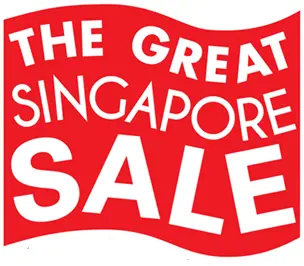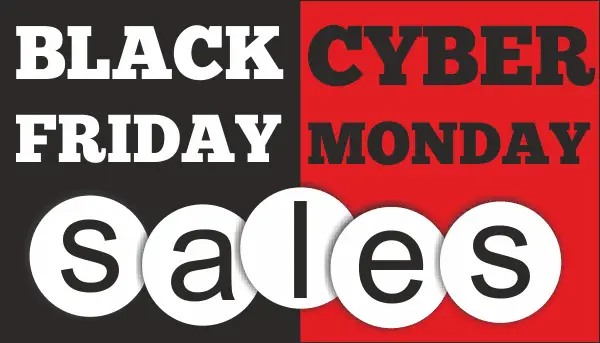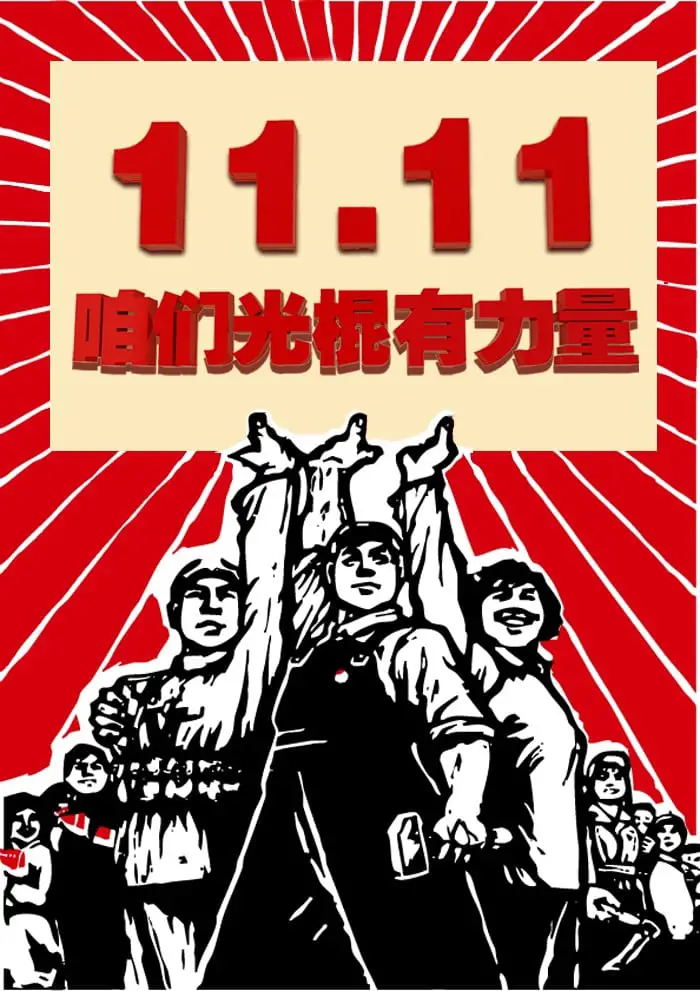The continuous growth of the retail sector is on the rise and according to a study published by eMarketer, the total worldwide retail sales estimated in 2015 surpassed a massive number of US $22 trillion. This figure is further projected to jump to US $3.58 trillion by 2019, accounting for 12.8% of all worldwide retail purchases. The undisputed growth of online retail in the near future has also affected the way e-commerce companies’ work. To target a growing base of online shoppers, ecommerce companies have come up with numerous smart solutions. One such solution is pushing and launching new online shopping events worldwide. Some of these events have become so popular globally that offline shopping events seem to be fighting a losing battle against them. For this reason, a global couponing platform called CUPONATION that publishes the daily deals/coupons for all small and big online sales has prepared a rundown of the top 6 most popular shopping events hosted on the web across the globe.
1) Singapore’s GSS
Often abbreviated as GSS, Great Singapore Sale is the most successful shopping event in the country, attracting thousands of tourists and Singaporeans alike from June to mid-August. The country’s biggest shopping extravaganza was originally held only for a month. However, when the first GSS in 1994 attracted 664,000 visitors, it was deemed so successful that the organizers decided to hold the event annually and extend it to a three-month long affair. 21 years later, in 2015, GSS attracted 2.7 million visitors, 4 times as many as when it launched. Total retail sales reached US$ 5.2 billion, and according to Mastercard, about 15% of all transactions were e-commerce transactions. Again, this figure is expected to grow in coming years.

2) US’s Black Friday Sale & Cyber Monday
Being the original massive shopping day, Black Friday continues to be the most famous shopping event worldwide. Initially introduced by U.S. retailers, the day after Thanksgiving is now promoted in all corners of the globe as the day with the best bargains. In total, US shoppers alone spent about US$ 12 billion on Black Friday in 2015. Adobe Digital Index (ADI) calculated that US$ 2.74 billion was spent online, an increase of 14.3 % over 2014. There were US$ 905 million in mobile sales, representing 33.2% of all sales compared with just 27% in 2014.
In many European countries, big e-commerce players like Amazon and Apple have been responsible for spreading the idea of Black Friday and bringing this offline sales event to online markets worldwide. While in the U.S. the event is all about queuing (or even camping) in front of stores to get the best deals and turning the shopping event into a family affair, most of the European sales take place online. Black Friday is a perfect example of how shopping days are evolving from solely offline activities to large-scale online events. This can be seen in the popularity of websites dedicated to this one day, such as blackfriday.com, Black-Friday.sale and theblackfriday.com.
With little time to recover from the madness of Black Friday, U.S. shoppers have another big shopping event just three days later. After its debut in November 2005, Cyber Monday has earned its place as a heavy hitter in the world of online sales events. The name was coined by Ellen Davis, SVP of the US National Retail Federation and used in the press release of Shop.org. While Black Friday is known for great technology deals as well as overcrowded stores, Cyber Monday mainly takes place online and the majority of sales are in the fashion sector. Surpassing even the best expectations of its organizers, Cyber Monday has become the online sales day of the year, generating a record-setting US$ 3.07 billion in 2015.
Many online retailers around the world have adopted the term “Cyber” Monday in order to replicate the huge sales and revenue it generates. Some countries offer weeklong deals while others stick to the original 24-hour event.

3) Malaysia’s MYCyberSale
There are 21 million internet users in Malaysia, and according to a study by GlobalWebIndex, about 7 million, or 33%, already purchase products online every month. In 2013, Nielsen-PayPal valued the total e-commerce market at RM 5.5 billion (US$ 1.36 billion), of which the mobile commerce market represents close to 50% (RM 1.82 billion [US$ 450 million]). Therefore, it came as no surprise when Malaysian officials launched “#MYCyberSale” in 2014, the first government-led online shopping day in the world. In 2014, transactions worth US$ 20.20 million were recorded in a mere five days. Malaysia has been gaining more attention from large international e-commerce companies like the H&M owned COS, Vivo and affiliate marketing companies like Flipit and CupoNation, which recently launched its services there. They are drawn by the opportunity to increase online sales, as well as high rates of internet and smartphone usage among the Malaysian population.

4) Australia’s Click Frenzy
Motivated by the success of Cyber Monday, Australians launched their own version with the so-called “Click Frenzy” on Tuesday, November 20th, 2012. Labeled “The Sale that Stops a Nation”, more than 300 retailers offered deals of up to 90% off retail prices during the 24-hour Click Frenzy. The massive online sales initiative hit a speedbump almost upon launch. Within minutes of the heavily promoted inaugural event, the event’s website crashed – resulting in significant backlash from millions of customers. The hashtag “#clickfail” immediately started trending on Twitter and various memes proceeded to mock the event in following years.
Despite the initial setback, Click Frenzy has become increasingly popular with the Australian public, bringing them great deals from both well-known and more obscure retailers. Click Frenzy generated more than AU$200 million (US$150 million) in sales in 2015.

5) China’s Single’s Day Online Celebration
Retail e-commerce sales in China are estimated to be around US$ 589.61 billion, which is almost twice that of the US (US$ 350 billion). Considering China’s increasing online penetration, this amount will increase much more within the next few years. In addition, the sales of its Western counterparts look like peanuts, compared to the annual revenue of China’s Single’s Day. Also known as Guanggun Jie, the day was introduced as an anti-Valentine’s Day amongst Chinese youth – a celebration of being single. The date, November 11th, or 1-1-1-1, was chosen as a visual representation of the single individual. What started as a fun, young festival soon became the world’s largest online shopping day. The Chinese Alibaba group trademarked the Chinese term for “Double 11” and began aggressively marketing the new online shopping event to young people. This helped them reach astonishing sales of US$ 9.3 billion in 2014 and over US$ 14.3 billion in 2015. Given the continuous growth of Chinese purchasing power, 2016 should see new record numbers.
While it certainly beats other online competitors when it comes to one-day sales, Single’s Day still has a long way to go before getting even remotely close to catching up to the sales of China’s “Golden Week” which takes place in February every year. Sales during the Lunar New Year vacation continue to grow, with revenues in 2016 rising to about US$ 115 billion.

6) India’s GOSF
The undisputable growth of e-commerce goes hand in hand with an increasing amount of new online sales days. Another remarkably huge sale worth mentioning is Google’s own shopping fest that it launched in India in 2012 known as the Great Online shopping fest (GOSF). It was the first ever event that brought different key retail players under one roof. However, after 2014, big players pulled out of GOSF due to the high costs involved and the declining appeal of GOSF. Thereafter, Google ended its annual sales event, which led e-commerce firms to focus their attention on the festival of Diwali, where people spend freely on clothes, shoes and phones. Companies like Flipkart, Amazon, and Snapdeal launched their sales events before Diwali. Amazon received more than 30 million unique visits during their Great Indian Diwali Sale in 2015.

Another magnanimously big sale includes the Amazon Prime Day sale that happens in July. To compete, a number of e-commerce sites worldwide like eBay, and Walmart have also been gearing up to compete with Amazon on its own shopping day, creating new sale days such as “Green Friday”.
It seems like every online retailer wants to join the race to lure digital shoppers, aiming to create a traffic magnet by establishing the next “biggest online sales event”. With the increase in online sales, this means that in the end, the real winners are the online shoppers.















